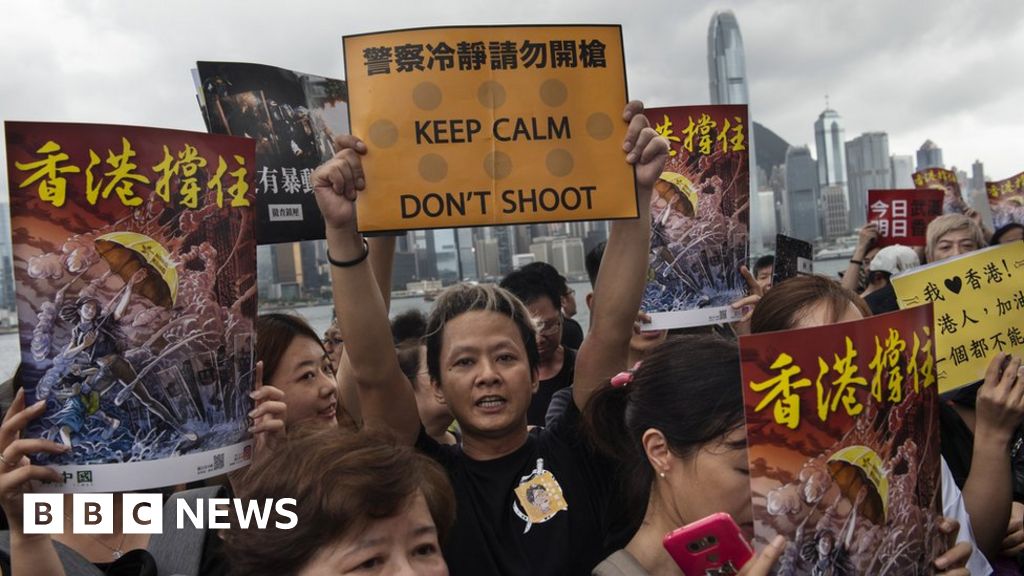Hong Kong Protesters Using Bluetooth Bridgefy App

 Image copyright
Getty Images
Image copyright
Getty Images
Pro-democracy protesters in Hong Kong have been turning to a new app to communicate - one that does not use the internet and is therefore harder for the Chinese authorities to trace.
Bridgefy is based on Bluetooth and allows protesters to communicate with each other without internet connection.
Downloads are up almost 4,000% in the past two months, according to measurement firm Apptopia.
Texts, email and messaging app WeChat are all monitored by the Chinese state.
Bridgefy uses a mesh network, which links together users' devices allowing people to chat with others even if they are in a different part of the city, by hopping on other users' phones until the message reaches the intended person.
The range from phone to phone is within 100m (330ft).
The app was designed by a start-up based in San Francisco and has previously been used in places where wi-fi or traditional networks struggle to work, such as large music or sporting events.
Speaking to Forbes, co-founder Jorge Rios said of the spike in use in Hong Kong: "People are using it to organise themselves and to stay safe, without having to depend on an internet connection."
The BBC understands that protesters are turning to Bridgefy in case the internet is cut off, or the so-called Great Firewall of China, which censors some parts of the web on the mainland, is instigated in Hong Kong.
A similar app, FireChat, has already been used in previous protests in Hong Kong and also in Taiwan, Iran and Iraq.
Media playback is unsupported on your device
Prof Alan Woodward, a computer security expert based at Surrey University, is not convinced such apps are really hidden from the authorities.
"With any peer-to-peer network, if you have the know-how, you can sit at central points of it and monitor which device is talking to which device and this metadata can tell you who is involved in chats.
"And, of course, anyone can join the mesh and it uses Bluetooth, which is not the most secure protocol. The authorities might not be able to listen in quite so easily but I suspect that they will have the means of doing it."
The protest movement in Hong Kong grew out of marches against a controversial bill to allow criminal suspects to be sent to mainland China for trial. That has since been suspended, but the marches have continued and morphed into a broader pro-democracy movement.
Protesters have shown tech-savvy skills before, with pictures circulating on Twitter earlier this summer showing some defusing cartridges of tear gas with water bottles.
From Chip War To Cloud War: The Next Frontier In Global Tech Competition
The global chip war, characterized by intense competition among nations and corporations for supremacy in semiconductor ... Read more
The High Stakes Of Tech Regulation: Security Risks And Market Dynamics
The influence of tech giants in the global economy continues to grow, raising crucial questions about how to balance sec... Read more
The Tyranny Of Instagram Interiors: Why It's Time To Break Free From Algorithm-Driven Aesthetics
Instagram has become a dominant force in shaping interior design trends, offering a seemingly endless stream of inspirat... Read more
The Data Crunch In AI: Strategies For Sustainability
Exploring solutions to the imminent exhaustion of internet data for AI training.As the artificial intelligence (AI) indu... Read more
Google Abandons Four-Year Effort To Remove Cookies From Chrome Browser
After four years of dedicated effort, Google has decided to abandon its plan to remove third-party cookies from its Chro... Read more
LinkedIn Embraces AI And Gamification To Drive User Engagement And Revenue
In an effort to tackle slowing revenue growth and enhance user engagement, LinkedIn is turning to artificial intelligenc... Read more

